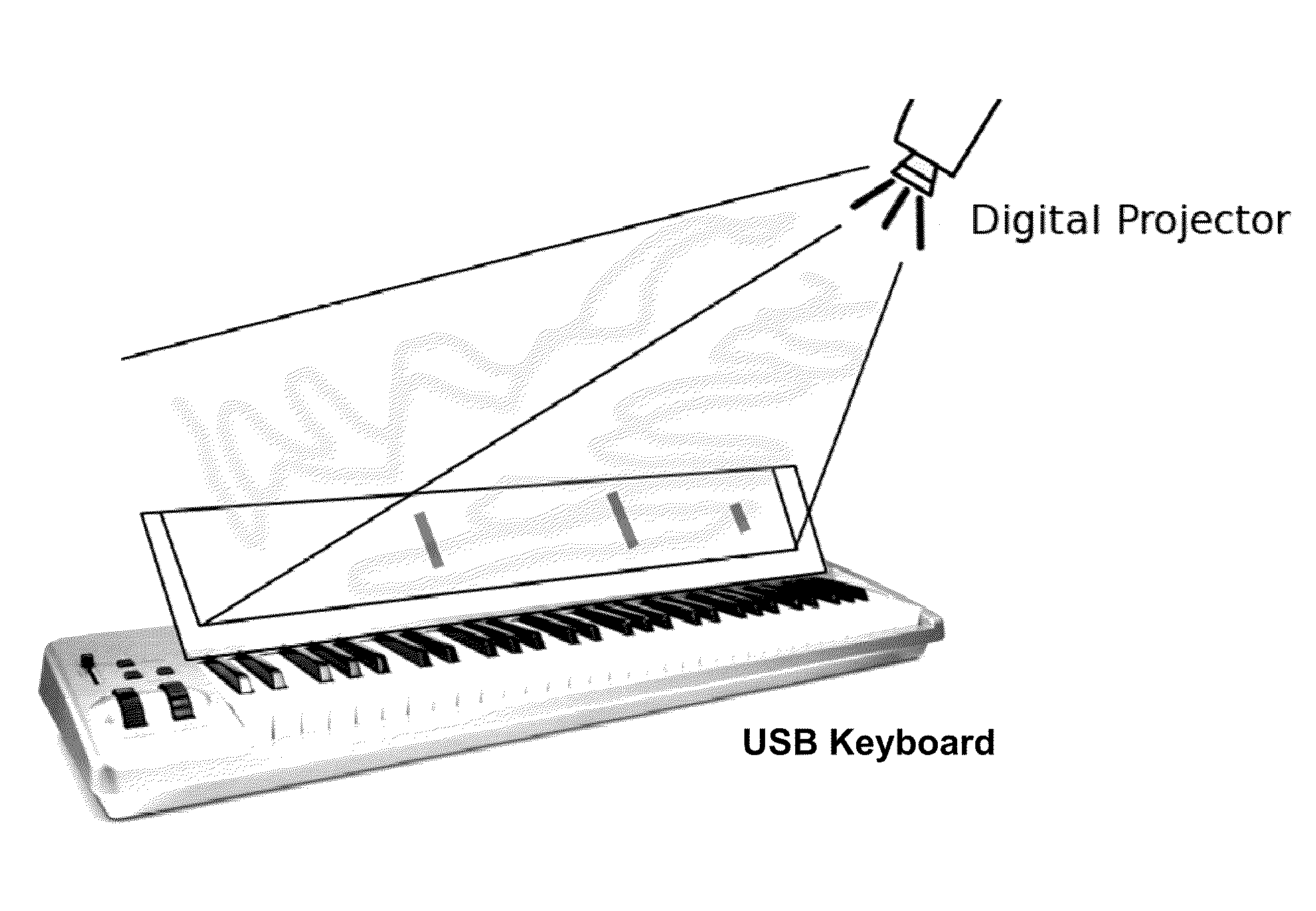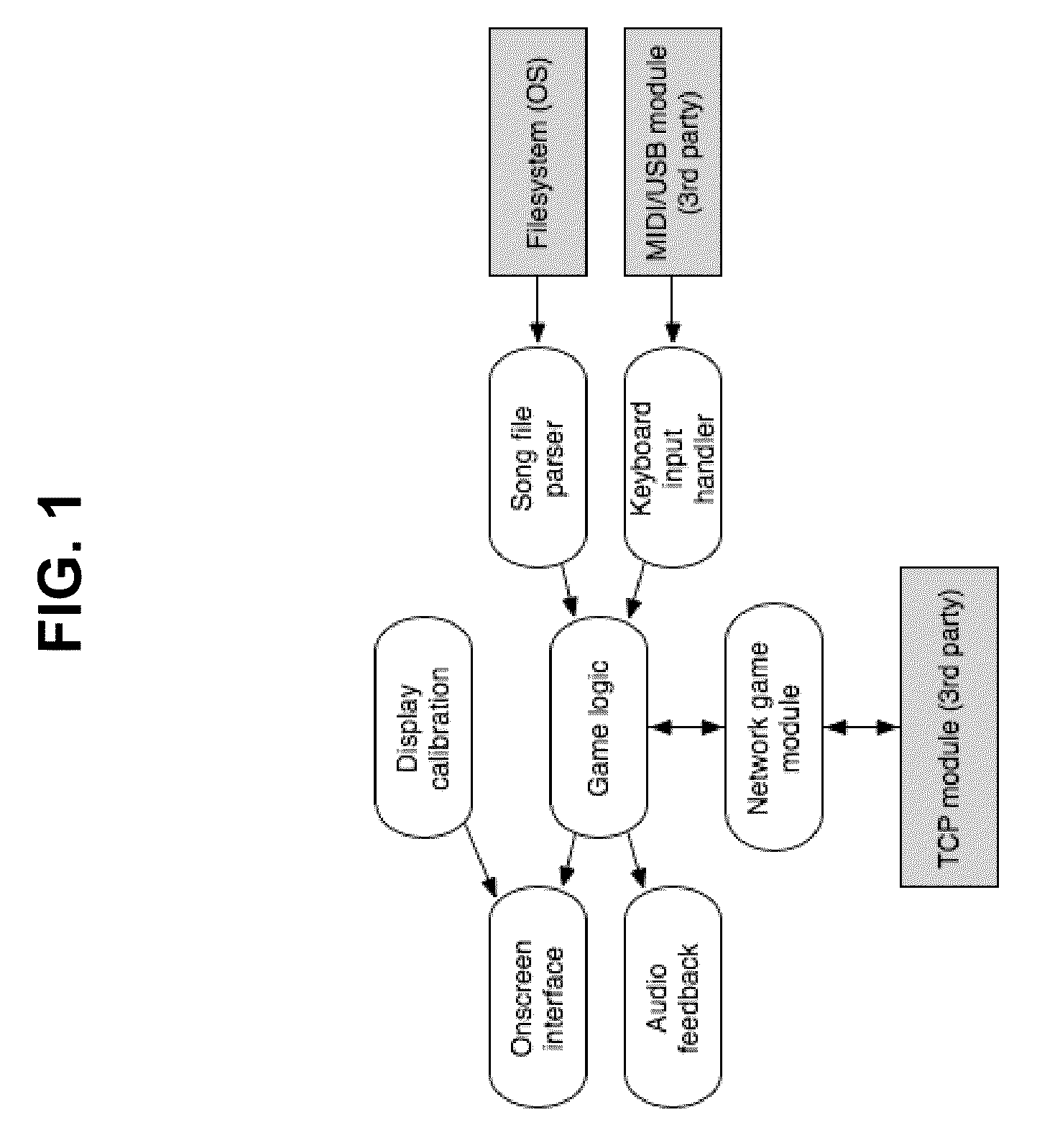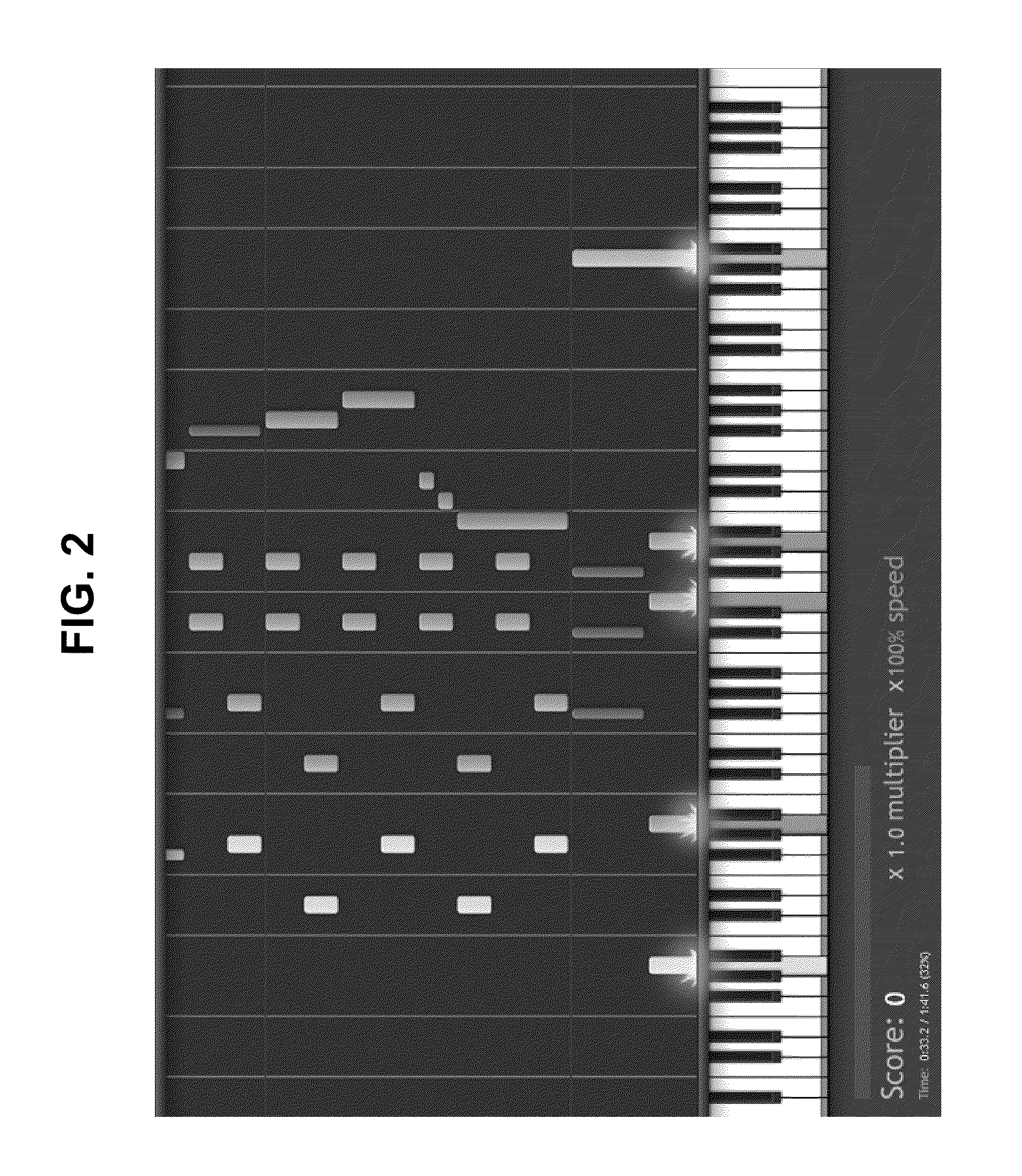Method and system for interactive musical game
a musical game and interactive technology, applied in the field of interactive musical games, can solve the problems of never being applied to a real instrument, requiring significant resources to become instrumentally proficient, and requiring a long time to achieve the effect of proficiency
- Summary
- Abstract
- Description
- Claims
- Application Information
AI Technical Summary
Benefits of technology
Problems solved by technology
Method used
Image
Examples
example
[0079]An embodiment of the game system of the invention was configured using an M-Audio Keystation 61-key USB as the input device. For a display device, a 24-inch flat-panel Dell LCD was used in some prototypes, and a computer video projector in other prototypes. The former had an advantage of requiring minimal calibration, while the latter had the advantage that the image could span the entire width of the keyboard, and could be projected onto a keyboard-proximal display surface so as to align exactly with the keys. The projector also allowed display of images on the keys themselves, which provides additional possibilities for enhancing the user interface and / or the game play experience.
[0080]In order to facilitate readable code and rapid prototyping, software was written in Python. Writing in an interpreted language ensured cross-platform compatibility. Performance cost was not found to be an issue in working prototypes. Python modules used included PyOpenGL for graphics and PyPor...
PUM
 Login to View More
Login to View More Abstract
Description
Claims
Application Information
 Login to View More
Login to View More - R&D
- Intellectual Property
- Life Sciences
- Materials
- Tech Scout
- Unparalleled Data Quality
- Higher Quality Content
- 60% Fewer Hallucinations
Browse by: Latest US Patents, China's latest patents, Technical Efficacy Thesaurus, Application Domain, Technology Topic, Popular Technical Reports.
© 2025 PatSnap. All rights reserved.Legal|Privacy policy|Modern Slavery Act Transparency Statement|Sitemap|About US| Contact US: help@patsnap.com



